#Pittsburgh Post Gazette Where To Buy
Explore tagged Tumblr posts
Text
The Pittsburgh Gazette to The Post-Gazette
Pittsburgh Post-Gazette: A Historic Newspaper Serving Metropolitan Pittsburgh The Pittsburgh Post-Gazette, commonly referred to as the PG, is a prominent and long-standing newspaper that has been serving the metropolitan Pittsburgh area in the state of Pennsylvania. With its roots tracing back to the Pittsburgh Gazette, which was established in 1786 as the first newspaper published west of the…

View On WordPress
#Is There A Pittsburgh Post Gazette Today#pittsburgh gazette#pittsburgh post gazette#pittsburgh post gazette history#Pittsburgh Post Gazette Location#Pittsburgh Post Gazette Owner#Pittsburgh Post Gazette Readership#Pittsburgh Post Gazette Staff#Pittsburgh Post Gazette Today#Pittsburgh Post Gazette Where To Buy#Pittsburgh Post Gazette Writers#Pittsburgh Post Gazette.com#Pittsburgh Post-gazette Website#post gazette pittsburgh
1 note
·
View note
Text
Full Article Below The Cut
Which players should the Penguins protect? Three Post-Gazette staffers play GM
MATT VENSEL
Pittsburgh Post-Gazette
JUL 15, 2021 5:18 AM
Ron Hextall has been mum about which Penguins he plans to protect in next Wednesday’s expansion draft. We have educated guesses but won’t officially find out until the weekend, after teams must formally submit their protected lists to the new Seattle Kraken and the rest of the league.
In the meantime, we decided we would steal Hextall’s comfy GM chair for a moment, kick back our feet, swivel around a little bit and share which players we would protect if Mario Lemieux was crazy enough to let us run the team.
Who’s we? Post-Gazette beat reporters Matt Vensel and Mike DeFabo and columnist Ron Cook, game-day regulars over at PPG Paints Arena.
We also projected which guy the Kraken would grab in each scenario.
All three over us opted to protect seven forwards, three defensemen and a goalie instead of eight overall skaters and a goalie. And while we all agreed on most of the players we would keep, there were a few differences. So we explained the rationale behind our personal protected lists.
Finally, these protected lists are somewhat based on the personal preferences of each of us. But there is some actual intel buried in here. So enjoy, let us know which of us is the smartest and feel free to share your lists, too.
Matt Vensel, Penguins beat reporter:
FORWARDS: Sidney Crosby, Evgeni Malkin, Jake Guentzel, Bryan Rust, Brandon Tanev, Teddy Blueger and Kasperi Kapanen
The first four guys are no-brainers. Tanev and Blueger are quick calls for me, too. Tanev is a guy who can provide a spark on a random Tuesday in January and help you win playoff games in May. He is also integral to the team’s off-ice chemistry. Blueger has become an effective shutdown center and added 22 points in 43 games last season. The final forward spot comes down to Kapanen and Jeff Carter. Carter is the more useful player to Pittsburgh for 2021-22, especially with Malkin out indefinitely. But I’ll gamble that Seattle passes on the 36-year-old and I will instead keep Kapanen, an imperfect middle-six winger but a tradable asset.
DEFENSEMEN: Kris Letang, Brian Dumoulin and Cody Ceci
Letang and Dumoulin are the easy ones. And young blue-liners John Marino and Pierre-Olivier Joseph are exempt, so need to worry about protecting them. No one else is a priority. Mike Matheson had a nice first season here and fellow lefty Marcus Pettersson is well-rounded with perhaps a little more room to grow. Unfortunately, both have pricey, long-term deals that eat up too much cap room relative to their level of performance. Ceci is an unrestricted free agent but he is someone whom the Penguins should and will consider resigning. I’ll keep his rights, which could maybe be traded for a future asset if we can’t afford him.
GOALIE: Tristan Jarry
Protecting Jarry is not endorsing him as my No. 1 entering 2021-22. I just don’t want to be caught without a goalie when the record screeches on the offseason game of musical chairs. I still hope to bring in a veteran with some semblance of a playoff pedigree to push or potentially outright replace Jarry on the roster.
SEATTLE SELECTS…
Jared McCann. I crossed my fingers that Kraken GM Ron Francis would take one of these bigger cap hits off our books. But they pass on Matheson, Pettersson and winger Jason Zucker and roll the dice on McCann. The former first-rounder has speed, a wicked wrister, versatility and a reasonable $2.9 million salary. The Kraken hope that the 25-year-old finally puts it all together on his fourth NHL team.
Mike DeFabo, Penguins beat reporter:
FORWARDS: Sidney Crosby, Evgeni Malkin, Jake Guentzel, Bryan Rust, Brandon Tanev, Kasperi Kapanen and Jeff Carter.
The Penguins might be willing to play a game of chicken with Seattle and assume the Kraken will not select a 36-year-old who has just one year remaining on his contract. In fact, I’d expect them to take this bet and leave Carter exposed. But if I’m playing GM? That’s too big of a gamble now that we know Evgeni Malkin underwent significant offseason knee surgery that will force him to miss the beginning of the season. Who knows when Malkin will actually return? Who knows how effective he’ll be at 35 with a wonky wheel and a disrupted offseason program? The Penguins need a reliable insurance policy. Carter is exactly that. Carter fit in seamlessly in the dressing room after he was acquired at the deadline and made his presence felt on the ice, too, scoring 13 goals in 20 games, including playoffs.
DEFENSEMEN: Kris Letang, Brian Dumoulin and Mike Matheson
There’s an argument to be made that the Penguins should leave both Pettersson and Matheson exposed and try to entice Seattle to take one of those long, expensive contracts off their hands. However, the way the Penguins’ speed-oriented system highlighted Matheson’s strengths makes him a player that I wouldn’t want to lose for nothing.
GOALIE: Tristan Jarry
Jarry’s postseason performance didn’t inspire a lot of confidence. But where will the Penguins be if Seattle selects their No. 1 netminder? I’d still try to add a goalie to challenge Jarry for starting time or possibly even supplant him. But knowing he’s on the roster gives the team more options and a safety net.
SEATTLE SELECTS…
Teddy Blueger. Give the 26-year-old center credit. He’s almost always the last player on the ice at practice, fine-tuning his game as he adds an offensive dimension to what’s already a consistent defensive game. But let’s not make him out to be more than he is. He’s still, more or less, a fourth-line center on a team filled with talented forwards. The Penguins would have a much-easier time replacing a fourth-line center than a second-line center like Carter.
Ron Cook, Post-Gazette columnist:
FORWARDS: Sidney Crosby, Evgeni Malkin, Jake Guentzel, Bryan Rust, Kasperi Kapanen, Brandon Tanev and Teddy Blueger
Only the final spot was difficult for me: Blueger or Jared McCann. I’m gambling the Kraken won’t take Jeff Carter at his advanced age even though he would be a perfect leader on a young team. It would be nice if Seattle would take Jason Zucker and his inflated salary off the Penguins’ hands, but that isn’t going to happen. I went with Blueger over McCann because he is more qualified as a center.
DEFENSEMEN: Kris Letang, Brian Dumoulin and Mike Matheson
The Penguins don’t have to worry about losing much on the blue line. Matheson and Marcus Pettersson are more than expendable because of their high salaries, but the Kraken won’t be interested in either player. It’s good that John Marino is exempt from this draft. I see him coming back next season and having a good year. Getting bigger and tougher on defense should be Ron Hextall’s No. 1 offseason priority. Opponents go virtually untouched in front of the Penguins’ net.
GOALIE: Tristan Jarry.
Penguins management insists it still believes in Jarry despite his playoff flameout. I wasn’t buying any of it until someone I trust in the organization told me that the coaches and players know the truth about Jarry – that he was injured late in the season, didn’t get to practice before the playoff series against the Islanders and lost his edge. I still have my doubts and want to see the team bring in a veteran goaltender to challenge Jarry for playing time. That wouldn’t be good news for Casey DeSmith, who is a solid No. 2 netminder. Who knows? DeSmith might have given the Penguins a better chance against the Islanders if he hadn’t been injured.
SEATTLE SELECTS…
McCann. Sadly. The Penguins won the NHL’s most rugged division last season so you know they are going to lose a good player in the expansion draft. That will be McCann. I will hate to see him go despite the fact he came up small in the postseason the past two years. I see him as a solid NHL player for many years.
First Published July 15, 2021, 5:18am
6 notes
·
View notes
Text
Norm Peterson Is Gay for Pay
“Norm, Is That You?” (December 8, 1988)
If we told you this episode features George Wendt’s character pretending to be gay, you’d probably imagine that Wendt would go really big with that performance. Most sitcoms would if a straight actor were playing a straight character playing a gay character, but Cheers doesn’t, and in fact this is an episode about gayness where it goes oddly remarked upon.
Here’s the Pittsburgh Post-Gazette article in which it was conjectured that Cheers might replace Kirstie Alley with Joan Severance, playing Rebecca Howe’s sister.
Watch the trailer for Norman… Is That You?, the 1973 Redd Foxx comedy that came out three years after his sitcom referenced the source material in “Lamont, Is That You?”
The strangeness that is Pink Lady and Jeff.
And yes, Spain remade Cheers. It has a Woody and a Coach existing at the same time. It’s weird.
Buy Gayest Episode Ever shirts, totes and more on our TeePublic page.
Buy Glen’s movie, Being Frank.
Support us on Patreon!
Follow: GEE on Twitter • Drew on Twitter • Glen on Twitter
Listen: iTunes • Spotify • Stitcher • Google Play • Google Podcasts • Himalaya • TuneIn • SoundCloud
And yes, we do have an official website! And we even have episode transcripts courtesy of Sarah Neal. Our logo was designed by Rob Wilson.
This is a TableCakes podcast.
This episode’s outro track is "Southpaw" by Pink Lady: Apple Music • Spotify
Listen now!
4 notes
·
View notes
Text
Internet Advertising Articles
Putting what you are promoting online is the most recent approach so that you can become profitable. When it comes to Chinese social media marketing , it's essential to use different tones to communicate together with your Chinese viewers on its own social media platforms, resembling Weibo (Facebook and Twitter equivalent in China), including Sina Weibo, Tencent Qzone (equal Fb and Twitter in China), Tencent QQ (immediate messaging instruments), Tencent Wechat (cell communication utility and personal private community), Renren (Facebook equal in China) and Youku & Tudou (YouTube equivalent in China). The Nielsen Firm carried out a survey in March 2010 and polled greater than 27,000 Web users in 55 markets from the Asia-Pacific, Europe, Center East, North America, and South America to look at questions similar to "How do consumers shop on-line?", "What do they intend to buy?", "How do they use various online procuring net pages?", and the impression of social media and different factors that come into play when shoppers try to determine the way to spend their money on which product or service. Epic Games introduced at present that it will likely be taking a smaller lower of gross sales made through its Unreal Engine Market, the place creators like digital artists, sound designers and programmers can promote merchandise that sport developers can use in their very own initiatives. Shoppers find a product of curiosity by visiting the website of the retailer straight or by looking amongst alternative vendors using a procuring search engine Once a selected product has been discovered on the web site of the vendor, most on-line retailers use shopping cart software to permit the buyer to accumulate multiple gadgets and to adjust portions, like filling a bodily procuring cart or basket in a conventional retailer. I discovered the customer service number on Amazon's web site but after speaking to a vendor support person, they advised me that I might solely be helped by emailing the payments-funds@ record and there was nobody that I could converse with concerning any points on funds. firm and products have been featured in Cosmopolitan, The Los Angeles Times, Penthouse Magazine, , Gizmodo, The Washington Post Specific, Talkies Magazine, Sunday Morning Post, Miami Herald, Janes Information, Solar Sentinel, Shiny Shiny, Fort Wayne Journal Gazette, Techie Diva, Nashua Telegraph, Computing Unplugged, Pi Magazine The Life-style Bible, Ta Kung Pao Newspaper, Ming Pao Newspaper, engadget, Pittsburgh Put up Gazette, Orlando Sentinel, Luxist, and Supercharged Kama Sutra. Another rising development in cell ecommerce is using jQuery for unprecedented level of consumer-stimulated navigation, site manipulation, and responsive design jQuery now exploits the JavaScript Framework Library and integrates Ajax growth right into a cross-platform design supreme for cellular entry. Amazon is aggressively advertising its face surveillance know-how to police, boasting that its service can identify up to one hundred faces in a single image, monitor people in real time by way of surveillance cameras, and scan footage from body cameras A sheriff's division in Oregon has already began using Amazon Rekognition to compare people's faces in opposition to a mugshot database, with none public debate. It is onerous with all the fees (itemizing & commission & only an insufficient delivery allowance) on the most important venue to make a dime, after all the fees on a $9.99 plant the seller get $6.29 then has to attend 2 weeks to receives a commission. So firstly, I've been trying round for websites where you possibly can promote gadgets on-line totally free, this is simply because on public sale listing websites will cost you numerous forms of charges, they usually even cost you a payment for hosting pictures on their website. Smaller platforms that are newer, in addition to niche platforms that target specific audiences are nice choices for people who find themselves selling many similar gadgets, as well as individuals who could also be new to online promoting general.
2 notes
·
View notes
Text
Luke Voit Wants DJ LeMahieu Back On The Yankees But Has To Worry About Himself Being Traded
New Post has been published on https://perfectirishgifts.com/luke-voit-wants-dj-lemahieu-back-on-the-yankees-but-has-to-worry-about-himself-being-traded/
Luke Voit Wants DJ LeMahieu Back On The Yankees But Has To Worry About Himself Being Traded
Luke Voit led the major leagues with 22 homers and has heard his name mentioned in trade rumors.
Luke Voit has gone from a quiet trade on a late Saturday night in July to becoming a major league home run champion, albeit in a shortened season. He achieved the home run title despite visibly dealing with some kind of ailment that was vaguely described as “foot stuff.”
Which leads to the question of why Voit is being thrown around in trade rumors as the Yankees plot their course for the 2021 season, which hopefully will be a normal season and not anything like 2020’s 60-game campaign.
The latest bit of speculation is out of Pittsburgh, and although it definitively does not mention Voit, logic states that if this move were to take place, the enthusiastic slugger would become a former Yankee.
According to Jason Mackey, who covers the Pirates for the Pittsburgh Post-Gazette, the Yankees have had conversations involving Josh Bell and Jameson Taillon. Not much else has emerged from that tweet, but Bell happens to be a first baseman, which is where Voit plays most games before being replaced by DJ LeMahieu defensively in a double switch.
If this rumor had arisen after the 2019 season, you could have made the argument Bell was the better option than Voit.
Bell had a monster season for a team that totally collapsed in the second half when he batted .277 with 37 homers, 116 RBIs while posting a .936 OPS and a WAR of 4.3. Voit posted respectable numbers with a .263 average, 21 homers and 62 RBIs while dealing with a hernia injury that resulted in core muscle surgery.
However, evaluating talent sometimes comes with a what have you done lately factor and Voit’s numbers from this season certainly surpass what Bell did for a 19-win team. Bell followed up the monster production by producing a career worst .226 average with eight homers and 22 RBI, numbers that calculated over 162 games result in 22 homers and 59 RBIs.
Then there is the matter of finances which is why the Pirates are even mentioned as trying to move Bell (see Gerrit Cole, Andrew McCutchen). Bell is two years away from free agency, made a prorated salary of $1.78 million and is projected according to MLB Trade Rumors to be paid between $5.1 million to $7.2 million.
Voit is approaching those levels financially entering his first year of salary arbitration, which projects to get his salary between $4 and $5 million, making him less costly than Bell and with four years of team control. But by getting Bell, either Voit would be the logical piece going to Pittsburgh or be dealt somewhere else to make room for the switch-hitting Bell.
Both are good players, but if you are going off recent times, Voit is the better option along with a new contract for LeMahieu, who was significantly underpaid in the context of how he performed in the last two seasons.
These days, Voit is advocating for LeMahieu to remain in pinstripes while also hearing his name bandied in the rumor section. Recently on YES Network’s Hot Stove Show, he said he would bet LeMahieu is returning, and on Wednesday while speaking to reporters to promote Saturday’s Army-Navy game, he reiterated that belief.
“If I was a gambling man, I’d want to put money on DJ coming back,” he told reporters. “I think he wants to be back. I hope he’s back because he’s one of the best players in baseball, one of the best hitters I ever played with. I want him in the pinstripes for the rest of his career.”
Especially if Voit can be devoid of the plantar fasciitis in his right foot, which bothered him for two months.
“I’m in the right direction and everything is normal, so I’m excited for next year,” he said.
The more interesting component to this rumor would be Taillon, who is another pitcher coming off Tommy John surgery. He has not pitched since undergoing the surgery in Aug. 2019 but in his last full season he won 14 games with a 3.20 ERA with a fastball that reached the high 90s.
Taillon would be another pitcher coming to the Yankees with two years to go towards free agency and recently the Yankees have experienced mixed results with that category of pitcher.
They gave up three prospects for Sonny Gray, only to openly say they were trading him after a nightmarish 2018 season. They parted with Justus Sheffield to get James Paxton from Seattle and that move also was mixed with Paxton winning 15 games and then getting derailed by back surgery followed by a forearm injury that impacted his fastball velocity heading into free agency.
As of Tuesday, Taillon told the Post-Gazette he feels “phenomenal” after resuming throwing and thus is a classic buy low pitcher. And pitching is more of a need at this point with numerous innings to fill beyond Cole.
The Yankees currently have three free agents in Masahiro Tanaka, J.A. Happ and Paxton. Tanaka is a possibility to return, Happ appears all but gone and Paxton seems unlikely to return, meaning a rotation is Cole, a returning Luis Severino from Tommy John surgery, along with youngsters Deivi Garcia and Jordan Montgomery.
Of course, the Yankees still want to settle the LeMahieu situation while fans hope Voit’s words are right. It just may be a question of Voit and LeMahieu remaining teammates in pinstripes.
From SportsMoney in Perfectirishgifts
0 notes
Link

“If there's a food that speaks to cultural diversity in about as many tongues as there are taste buds, it's sausage.It's not an overstatement to say there are thousands of varieties of sausages in the world.

“Abruzzo: The rich, mild spiced sausage from the southern Abruzzo region of Italy is very dark in color and made with pork livers.”

“Andouille: The spicy smoked pork sausage, aka Cajun or Louisiana andouille, is used in jambalaya and gumbo. Don't confuse it with the milder French andouille sausage. Closest substitute: kielbasa.”
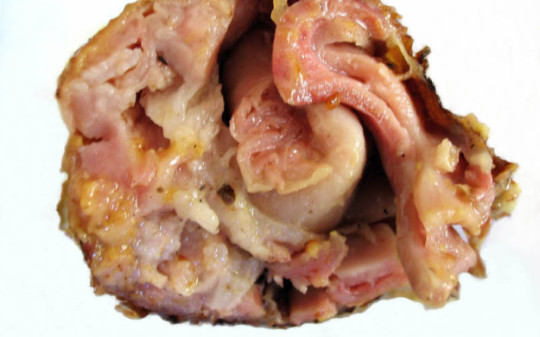
“Andouillette: The tripe sausage is a small version of the French andouille sausage. Closest substitutes: French andouille (larger) or Italian sweet sausage.”

”Bauerwurst/bauernwurst: The chunky German farmer's sausage is often grilled and served on a bun or cooked with sauerkraut.”

”Haggis: Stuffing a sheep's stomach with the chopped mixture of the animal's heart, lungs and liver, and then adding oatmeal, onion, fat and seasonings make this large Scottish sausage. It's usually steamed before serving.”
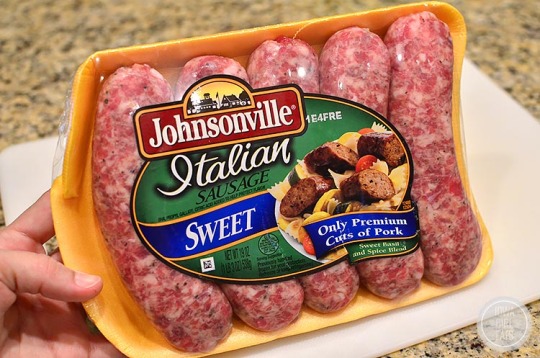
”Italian: The pork sausage, sold either as links or in bulk, is often added to pasta sauces. Varieties include sweet, mild, hot and ones flavored with garlic and fennel seed. Cook thoroughly before serving.”

“Kielbasa/kolbasa/knublewurst: The smoked Polish sausage is made with pork and/or beef and flavored with garlic, pimento and cloves. Although precooked, they are often heated before serving. Closest substitutes: andouille, chorizo or linguica.”

“Kishke/kishka/stuffed derma: The Polish/Jewish specialty consists of beef intestines stuffed with matzo meal, onion and suet.”

“Toulouse: The exquisite French sausage is usually made with pork, smoked bacon, wine and garlic, and is great in a casserole. Cook it before serving. Closest substitutes: kielbasa or Italian sweet sausage.”
(via Sausage speaks many global languages | Pittsburgh Post-Gazette)

A Culture Revealed Through Comfort Food
“Google hamburger history, and you'll soon be reading of thirteenth-century warlord Genghis Khan and his fierce cavalry. According to prevailing Internet wisdom (not to mention a goodly number of books), the Mongol leader of the Golden Horde did more than merely conquer vast swathes of the globe. Indeed, the emperor of all emperors invented the hamburger.”
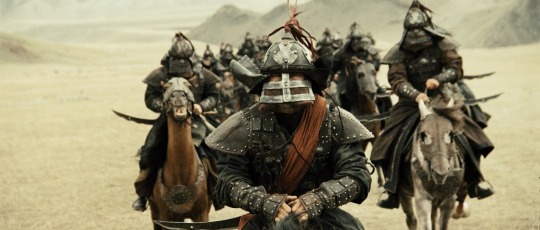
”Genghis's grandson, Kublai Khan, who invaded Moscow in 1238, bringing with him a taste for pounded meat. Of course, the Russians also recognized the superiority of this technique and soon adapted it for their own purposes, garnishing chopped raw mutton (and later beef) with onion and egg and dubbing the dish steak Tartar -- Tartar being their name for the Mongols.”

”Somewhere along the way, say, in the sixteenth century, ships from Hamburg, the most important German port of the day, began to cross the Baltic Sea with regularity, docking at Russian ports where minced beef dishes were popular. And soon German seamen returned home with a taste for minced raw beef...the basic story, in all its facile glory, of how the Mongol horde begat the Big Mac.”
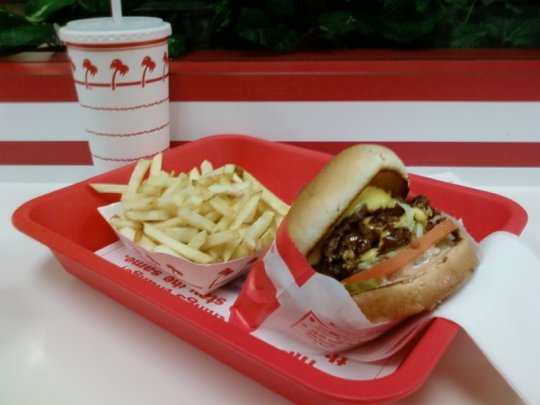
”This tale is flawed. The history of proletarian dishes like hamburgers is rarely explained by a linear progression of events. Mongols did not invent chopped meat -- such dishes were popular back in the days of the Roman Empire. In fact, as Los Angeles burger hound Charles Perry has pointed out, a second-century Roman cookbook features an entire chapter of chopped meat dishes.”

“[B]y the late 1700s, sausages of minced and seasoned beef were known to the British as Hamburg sausages. By as early as 1834, the menu of Delmonico's in New York City advertised a Hamburger steak.”

(via A Culture Revealed Through Comfort Food | NPR)
These Vegan Sausage Brands Are Smokin’
“Whatever way you chop it, there’s nothing savory about the ways in which animals are killed for food. Vegan sausages made from plants beat meat made from animals, and we’ve got the list of the brands that are the real crowd-pleasers.
The Beyond Sausage, available in Hot Italian and Brat Original varieties, is taking the vegan sausage game to a whole new level. It’s free of soy, gluten, and GMOs.”

“ The Zesty Andouille flavor is a great addition to kick your Creole up a notch. Or polish off a plate of potatoes and peppers with the Kielbasa sausage. Tofurky also offers Italian Sausage and Beer Brats.”

” Field Roast is serving up a slew of grain-based sausages available in styles such as Smoked Apple Sage, Apple Maple Breakfast, Italian, and Mexican Chipotle.”

”Lightlife[,] The brand’s Smart Sausages come in both Italian and Chorizo flavors.”
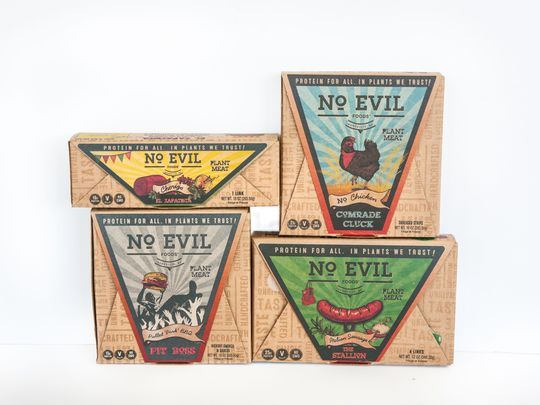
“No Evil Foods[,] With a name like The Stallion, it’s no surprise that this Italian sausage sure packs a punch.”
(via These Vegan Sausage Brands Are Smokin’ | Peta)

LIGHTLIFE’S NEW VEGAN GROUND BEEF ACTUALLY TASTES LIKE THE REAL THING
“Veggie and vegan meat brand Lightlife has launched ground beef that tastes just like the real deal.Lightlife — which labels itself “the plant-based protein pioneer”
The plant-based Ground Beef — which has the same “juicy texture” as animal-based beef, according to the brand — is stocked in the meat aisle, alongside its own “bleeding” plant-based burger, and Beyond Meat’s Beyond Burger.”

“Beyond Meat initially championed the idea of placing plant-based meat products alongside real meat products. The brand believes that most of those looking to buy realistic meat-like products are actually meat-eaters, rather than those who follow a vegan or vegetarian diet.
Like Lightlife, a number of companies have witnessed Beyond Meat’s success with the tactic and followed the brand’s lead.
Lightlife is owned by Maple Leaf Foods, a Canadian packaged meat brand, and U.S. meat giant Tyson Foods previously held shares in Beyond Meat. The latter now has a market value of around $3.8 billion, jumping 163 percent in value after it became the first vegan meat brand to IPO earlier this month.”

“Maple Leaf Foods is also jumping on the bandwagon. It was announced in April that Greenleaf Foods – a subsidiary of Maple Leaf Foods — will open a $310 million vegan protein factory, doubling the production of Lightlife Foods and its other vegan meat brand, Field Roast.”
(via LIGHTLIFE’S NEW VEGAN GROUND BEEF ACTUALLY TASTES LIKE THE REAL THING | Live Kindly)
#kielbasa#kishka#polishkeeshka#haggis#sausage#hamburger#mongolsinventedfastfood#mongolsaurkraut#vegansausage#veganhamburger#crueltyfree#plantbasedmeat#italiansausage#abruzzo#toulouse#veganhotdog#hotter&sweeterveganmama#imveganforu#AG#iloveyou#andanimals
0 notes
Text
291. bottled water

(Seventeen, September 1996)
I remember this article from Seventeen when I was 13, when bottled water was out of control. It was like we all discovered water for the first time. We could bring water with us anywhere we wanted. We could get water from fancy lands! Hose Water wasn’t the best tasting water on the block now. Celebrities carried around giant bottles of water like their babies. There was even a bottled water bar on Rodeo Drive in Beverly Hills:
Out on Rodeo Drive, where the high prices and desert temperatures can give anyone a man-size thirst, the hot new watering hole is the only bar in America where they water the drinks and get away with it.
The water bar is tucked away in the rear of lxi:z, pronounced ick-sees, a pricey clothing shop. (The name comes from a pronunciation of the Roman numeral twenty—that halcyon age, say the owners, when life is most effervescent.) On sale are 68 varieties of bottled water from 25 countries. At $1 to $2 a bottle, these still (and carbonated) waters run fairly cheap and are served strictly straight up. Ice cubes are a violation of international waters, says owner Steve Mills, because they “void out the subtleties.” 1
There was also a funny bit on Mystery Science Theater 3000 in the mid 90s when Dr. Forrester and his mom was trying to get Crow’s “Earth vs Soup” movie made, and every production meeting and test marketing thingy they went to, the bottles of water kept getting bigger and bigger, just like in Hollywood:



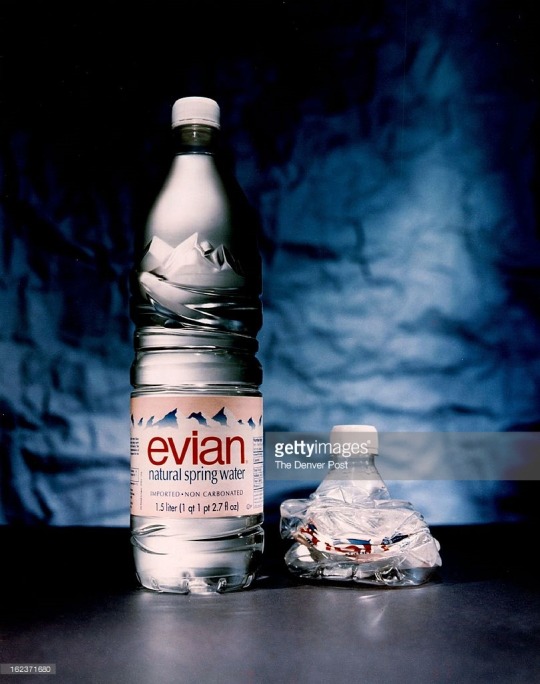
Evian
Evian along with New York Seltzer and blue Nehi was my first beverage memories? I guess you could call it. I can’t remember my very very first memory of Evian, but one of them was from Troop Beverly Hills with Phyllis mourning over her divorce, watching her husband’s old commercials, laying in bed surrounded by giant Evian bottles:

(I only saw this scene whenever The Movie Channel would show the movie.)
I wanted this to be my life, Evian bottles surrounding my bed, watching old tapes. I was almost right. Minus the divorce. No man will marry me.

Perrier
Perrier skyrocketed in popularity in the late 1970s with an advertising campaign the claimed that it was the Earth’s first soft drink, and with Orson Welles’ voiceover in commercials.
This grumbly old [?] man who wrote this didn’t see the popularity:

5

To show that people would buy anything in the 80s, there was even a book about Perrier, which I had to inter-library loan from work. There was only three copies of it when I searched for it in OCLC services. (that’s a library reference for my catalogers out there) The book was so-so-so boring. So many off topic photographs of France, where the beverage comes from. There was only a few pages on the history of the beverage. I think I only saw two, three pictures of people with Perrier, including this bizarre marathon? Where you had to balance the Perrier on a tray(pictured above)? :
VANCOUVER -- Some 130 waiters and waitresses ignmmid dismal weather and the old restaurant axiom that 'nothing operates befmmitnoon' to juggle an open Perrier bottle on tray five kilometers Thursday morning through Stanley Park in the First Annual Waiter's Race.
Thetmen's winner of the Vancouver Sea Festival event was Los Angeles, Calif. resident Roger Bourbon, a gourmet chef who is listed in the Guiness Book of World Records as the 'the world's fastest running waiter.'
His time was 17:58.04.
Sponsored by Perrier, the rules say entrants must be employed by a restaurant or hotel and must run in formal waiter's attire while carrying an open bottle of Perrier on a tray. The runner is disqualified if the bottle falls to the ground.
Al Thompson of Vancouver finished second in 18:33.07 while the top women finisher, and seventh overall, was Julie Barrett of Vancouver in 21:51.06. 2
In 1990, Perrier was recalled in the United Sates due to trace amounts of benzine:
Told of Perrier's action, Sirio Maccioni, owner of Le Cirque restaurant in Manhattan, said: ''Oh, my God. Oh, my God.'' Then, after a pause, he added, ''Well, we have a lot of other water, the Saratoga, the San Pellegrino.''
Another restaurant owner, Andre Soltner, of Lutece in Manhattan, said, ''Oh, my God.'' Then he paused and added, ''Maybe we'll sell some wine now.'' Mr. Soltner said Perrier consumption was up twentyfold in his restaurant over the last five years.
At Washington Square Bar and Grill in San Francisco, a bartender, Alan Sharf, said he had not heard that Perrier was being recalled, but he did not think a recall would affect business there..
''It is pretty popular,'' said Mr. Sharf, ''but this being California, we have our local water, so it won't affect our business. It's pretty easily replaced.'' A bartender at Pierre au Tunnel, a French restaurant in midtown Manhattan, said: ''People think it's prestigious; it's an 'in' thing. We sell a lot of it.''
''To me I think it's the biggest hype since the Beatles,'' said the bartender, who would give only his first name, Alan.
A man who answered the telephone at the D'Agostino Supermarket at 74th Street and Broadway in Manhattan early this morning said that he had not heard of the recall and that Perrier was selling well. ''People buy it by the case,'' he said. 3
Sales plummeted 75%! 4

Volvic
All I knew from Volvic growing up was that it was in square bottles, and it was more expensive than Evian.

Volvic comes from volcanos.

(source)
Dannon
Yeah, the yogurt company got into the bottled water craze sometime in 1997. I only bought it because this guy I had a crush on in high school drank it.
Dasani & Aquafina

I thought it was strange when Aquafina first came out in 1997 that it was in the same 20 oz and big slam bottles that Pepsi was in.

Dasani debuted in early 1999:
Coke announced Friday that it will sell bottled water in the United States, and Dasani is it.
"Suffice it to say, we think this is the right time for us to get into this market and that Dasani is the right brand," said Coke spokesman Scott Jacobson.
The water, to be sold in a light blue plastic bottle, is expected to be available nationwide and in Canada before this summer. The name, developed over months, doesn't derive from any specific origin but is meant to convey "a clean, fresh taste," Jacobson said.
An advertising campaign will back the rollout as Coke plunges into a hot market. Bottled water has outpaced the growth of soft drinks, particularly in convenience stores, where water sales have increased as much as 30 percent in recent years. 6
I’m sorry but Dasani and Aquafina tastes horrible. It’s tap water. amirite?
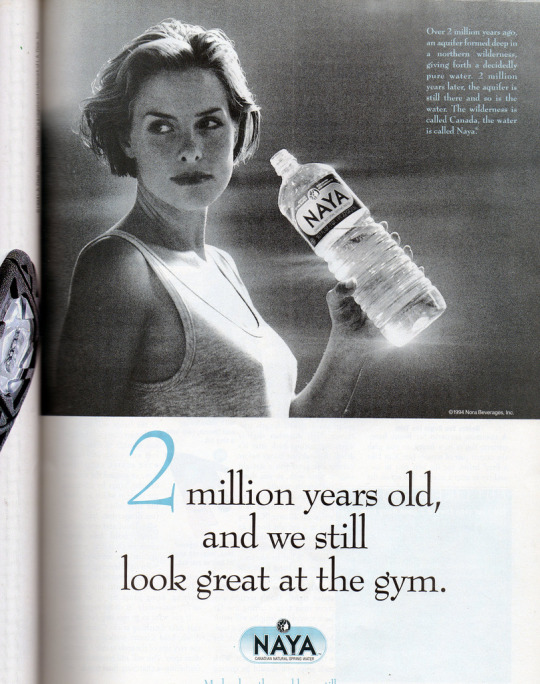
Naya

Chanel made a water bottle carrier back in 1994. Cher from Clueless carried around something similar to it. Look, there’s Naya.
Naya pretty much died when Coke came out with Dasani. Coke stopped putting Naya in its coolers and it was gone. I only see it at Whole Foods now.
Misc
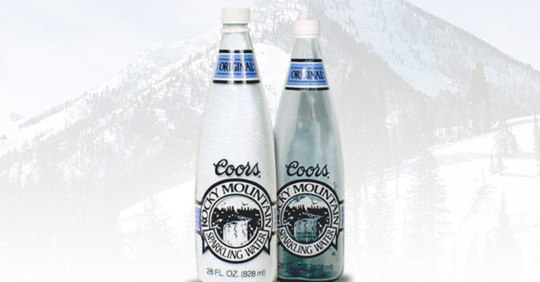
Coors had a still and sparkling water, because hey, that’s what the beer is made out of.
1.”A Beverly Hills Bar Has Water, Water from Everywhere, and That's All There Is to Drink,” People, February 9, 1987. http://people.com/archive/a-beverly-hills-bar-has-water-water-from-everywhere-and-thats-all-there-is-to-drink-vol-27-no-6/ .
2. “Some 130 waiters and waitresses ignmmid dismal weather and...,” UPI, July 15, 1982. http://www.upi.com/Archives/1982/07/15/Some-130-waiters-and-waitresses-ignmmid-dismal-weather-and/1246395553600/
3. James, George. “Perrier Recalls Its Water in U.S. After Benzene Is Found in Bottles,” New York Times, February 10, 1990. http://www.nytimes.com/1990/02/10/us/perrier-recalls-its-water-in-us-after-benzene-is-found-in-bottles.html
4. “Perrier Recall Causes Profit to Plummet 75% for 1989,” Los Angles Times, May 12, 1990. http://articles.latimes.com/1990-05-12/business/fi-1133_1_net-profit.
5. Hritz, Tom, “Don’t Pollute the Perrier,” Pittsburgh Post-Gazette , June 18, 1986. https://news.google.com/newspapers?nid=1129&dat=19860618&id=iK8xAAAAIBAJ&sjid=UG4DAAAAIBAJ&pg=6360,5146845
6. “Coca-Cola will introduce U.S. bottled water,” Augusta Chronicle, February 20,1999. http://chronicle.augusta.com/stories/1999/02/20/bus_253901.shtml#.WKormxIrJAa
Facebook | Etsy | Retail History Blog | Twitter | snapchat (thelastvcr) | other tumblr @thelastvcr
#the 1990s#perrier#evian#bottled water#naya#volvic#mystery science theater 3000#mst3k#earth vs. soup#coors
2 notes
·
View notes
Text
Stunning layoff figures from 11 states show the skyrocketing number of Americans that are losing work due to coronavirus
Rick Bowmer/ AP
The coronavirus pandemic is threatening to plunge the nation into a recession, and signs are emerging significant numbers of Americans are already losing their jobs.
At least 11 states saw skyrocketing numbers of people filing for unemployment benefits, according to The Washington Post and data rounded up by economist Jacob Robbins.
In New Jersey, so many people filed for unemployment that it crashed the state’s website.
Visit Business Insider’s homepage for more stories.
The coronavirus pandemic threatens to throw the economy into a tailspin as businesses shutter across the travel and service sectors and put people out of work.
There is increasing evidence that the number of people registering for unemployment benefits is skyrocketing across the country as a result of the pandemic — and putting systems under significant strain.
The figures are starting to come in from states, and it may be just the beginning of a grim portrait emerging in the labor market, The Washington Post reported.
Economist Jacob Robbins also rounded up data illustrating the surge of people seeking unemployment benefits.
Here are the initial wave of unemployment claims that rocked 11 state governments in recent days:
Pennsylvania: Around 50,000 claims were filed on Monday, and the Tuesday figure surpassed that. That’s compared to 14,000 during the first week of March, according to the Pittsburgh Post-Gazette.
Ohio: There were 11,995 unemployment claims on Sunday and 36,645 on Monday — compared to 545 the Sunday before, the Columbus Dispatch reported. The Sunday figure alone is around the average number of claims that Ohio’s labor agency gets in a month.
Minnesota: 31,000 people filed for unemployment Monday and Tuesday, per the Minnesota Star Tribune — a rate that’s 10x more compared to the same week last year.
Connecticut: The state saw 30,000 unemployment claims from Friday to Tuesday, according to the Hartford Courant. On average, there are usually around 3,000 to 3,500 unemployment claims each week.
New York: 21,000 people called to file for unemployment with the state’s Department of Labor by noon on Tuesday, compared to 2,000 the same day last week, per an agency press release.
Massachusetts: 19,884 people filed unemployment benefits on Monday alone, compared with 17,382 people for all of February, per WCVB News.
Rhode Island: 17,779 unemployment claims were filed in the last eight days, compared to 10 just the previous week, per WRPI News.
New Jersey: 15,000 people sought out unemployment benefits on Monday, which crashed the state’s website, WHYY reported.
Texas: Around 16,000 people sought unemployment benefits last week, compared to 4,500 only a week ago. It’s a large 40% jump, the Houston Chronicle reported.
Kentucky: 9,000 people filed for unemployment on Tuesday along, much higher than the 2,000 who usually seek job loss benefits on a given week, per the Lexington Herald-Leader.
Colorado: 3,900 claims filed on Monday, followed by 6,800 on only Tuesday morning, Denver 7 News reported. Last Monday, the state only had 400 people file for benefits.
The Trump administration is proposing a $1 trillion stimulus package as a lifeline to the battered American economy.
Wthout further action, unemployment in the US could reach 20% — double the worst figure reached during the Great Recession, Treasury Secretary Steven Mnuchin warned.
Read more: Dan Rasmussen studied every financial crisis back to 1970. He shares exactly where his data says to put your money as markets plunge — and explains why ‘now is a very good buying opportunity’
Other experts are warning of massive job losses. Former Trump administration economist Kevin Hassett told CNN there could be as many as 1 million jobs lost in March.
(function (d, s, id) { var js, fjs = d.getElementsByTagName(s)[0]; if (d.getElementById(id)) return; js = d.createElement(s); js.id = id; js.src = "https://connect.facebook.net/en_US/all.js#xfbml=1"; fjs.parentNode.insertBefore(js, fjs); } (document, 'script', 'facebook-jssdk')); Source link
from WordPress http://justtoosilly.com/2020/03/19/stunning-layoff-figures-from-11-states-show-the-skyrocketing-number-of-americans-that-are-losing-work-due-to-coronavirus/
0 notes
Text
UPMC confirms 12 cases of MRSA at Children's Hospital, including six babies - Pittsburgh Post-Gazette
New Post has been published on https://newsprofixpro.com/theeyesofthe/2019/07/02/upmc-confirms-12-cases-of-mrsa-at-childrens-hospital-including-six-babies-pittsburgh-post-gazette/
UPMC confirms 12 cases of MRSA at Children's Hospital, including six babies - Pittsburgh Post-Gazette
MENU Read More
Buy Now
Price: $756.99
Item specifics
Condition:
New: A brand-new, unused, unopened, undamaged item in its original packaging (where packaging is
Non-Domestic Product: No MPN:
EC-06C
Model:
EC-06C
Custom Bundle: No Modified Item: No Brand:
BestMassage
Country/Region of Manufacture: United States
$756.99 End Date: Tuesday Jul-2-2019 8:01:05 PDT Buy It Now for only: $756.99 Buy It Now | Add to watch list
0 notes
Text
Training Firm May Buy Old Pennsylvania Prison for $1
Five blocks from the hard stone and long shadows of Pittsburgh’s 137-year-old prison, trainees walk the skylit, art-and-orchid-adorned halls of the Manchester Bidwell Corporation. If that training center buys the State Correctional Institution Pittsburgh for $1, it will take a lot of work and money to bring an airy, open atmosphere to a place with dungeon charm, reports the Pittsburgh Post-Gazette. Manchester Bidwell president and CEO Kevin Jenkins admits he doesn’t have a plan to take on the 22-acre prison site, closed for two years. Word that the state plans to sell the massive prison complex for $1 has raised concerns in surrounding neighborhoods. Councilwoman Darlene Harris was surprised that Pennsylvania “would sell 22 acres with so much history, for a dollar.”
Manchester Bidwell Corporation trains 140 adults and 1,200 youth annually in job skills. Using the existing prison buildings seems out of the question. Jenkins says he doesn’t want to build “a world-class training facility,” especially one for marginalized populations, “inside a penitentiary-type setting.” The massive prison site has more than a dozen buildings, including the old warden’s quarters, prison housing units, dining hall, auditorium, storage buildings, warehouse, visitors’ complex, and the 1922 “correctional industries” shop buildings where license plates were manufactured.
Training Firm May Buy Old Pennsylvania Prison for $1 syndicated from https://immigrationattorneyto.wordpress.com/
0 notes
Text
Murder By Empty Words
The trend to reimagine a drug overdose into a murder has been going on for a while. Hysteria takes hold, the word “epidemic” grabs us by our throats and we begin to accept the premise that “something must be done.” But turning the corner from a useful, rational approach to solving a problem to the knee-jerk resort to harsh, unhelpful and carceral responses is just a breathlessly outraged scream away.
When a bullet-riddled body turns up in a gutter, there’s no question that a police investigation will follow. When a person dies of a drug overdose, however, police often dismiss it as a case of self-harm and close the file. That’s a mindset that should change so that victims’ families get justice and so murderers — make no mistake, dealers in fatal overdoses are murderers — get taken off the streets.
“Make no mistake” isn’t an argument. It’s playing your emotions by circumventing reason because someone ends up dead. Any needless dead person is a tragedy, even if it’s death by overdose at the drug user’s own hand. But it’s not even remotely similar to the bullet-riddled body, where some deliberately cause the death of another person.
And it may be that the dead person, not necessarily a victim of anyone other than themselves, will leave behind a grieving family. So too does the person killed in a fatal car accident. So too does the person who dies of cancer. Much as we can empathize with their loss, the loss doesn’t give rise to a cry of murder. Tragedy happens. That alone has nothing to do with the tragedy being a murder.
Indeed, police and prosecutors should cast the widest possible net, targeting not only the street-level dealers and prescription-happy doctors who can be linked to specific deaths but the pharmaceutical companies, suppliers and fat-cat executives whose reckless distribution of highly addictive drugs fed the victims’ fatal appetite.
Drug dealing is already illegal, even when the drugs are being sold by doc-owned drug mills. And Big Pharma has made a killing by pushing docs to prescribe opioids. All of which may well be cause for concern, or may have nothing to do with the problem despite the superficial connections that lack anything more than assumptions of causation.
It may be close enough for an insipid demand for investigation and prosecution, but law requires evidence, proof, that someone caused death with the requisite mental state. There may well be other issues at play with regard to Big Pharma, but it’s not murder. Not even when it’s an “epidemic.”
Yet, that hasn’t stopped a push to manufacture murder out of tragedy as a Menckian response.
Murder charges are a powerful tool. Conspiracy and racketeering charges are, too. As Pennsylvania Attorney General Josh Shapiro and his counterparts in 40 other states continue a joint investigation into a handful of drugmakers and distributors, they should aim to bury lawbreakers under an avalanche of criminal and civil penalties.
There’s a good chance that many won’t shed a tear for drugmakers pushing oxy on physicians and their patients, ignoring the unintended consequence that chronic pain-sufferers are being denied solace by docs who fear a beancounter from DEA will drop by. But once the steamroller of prosecution gets rolling, it’s not the guys in suits who get crushed.
Prosecutors, medical examiners and coroners who treat overdoses as homicides serve as models for a justice system that must do more to stem the body count. Beaver County District Attorney David J. Lozier is setting an example by deploying a team, in cooperation with the attorney general’s office, on every fatal overdose. It gathers evidence and tries to identify the dealer and arrange a quick buy in the hope of tying the drug investigators’ purchase to that found in the victim. Allegheny County District Attorney Stephen A. Zappala Jr. has held training sessions for municipal police agencies and provided them a disc with instructions for pursuing drug-related murder cases.
Prosecutors are being taught to treat, to go after, pushers as murderers because we’ve learned nothing from the War on Drugs over the past 40 years, and this time will be different? Drug dealing sentences have long been on par with murder sentences, under the simplistic assumption that ever-longer sentences will deter people from selling drugs. It didn’t work before. It won’t work now. We know it doesn’t work, but so what? Longer, harsher, 50 years, a million years, just keep piling on more and eventually it has to work, right?
Maybe the problem isn’t just that the assumption is fundamentally wrong, but that it hasn’t been sufficiently sold to the public and participants in the system?
To accelerate the process, law enforcement training programs, law schools, victim advocacy groups and other criminal justice organizations should emphasize the importance of treating overdoses as homicides and dealers as potential serial killers.
If only law students are trained to believe that drug dealers are “potential serial killers,” that will finally fix the problem? Certainly victim advocacy groups will grab hold of the outrage to back up the most emotionally appealing, if substantively empty, arguments because of their heartache at the loss. And for the prosecutors who believe they’re the avenging angels of society, ridding it of the blight of demon drugs, every tool that enables them to slay their foes more effectively is welcome, even if fails to accomplish any actual goal.
This editorial in the Pittsburgh Post-Gazette shows not how to deal with the latest hysteria, but how the empty rhetoric — “serial killers”? Seriously? — of outrage has become the stock in trade of public discourse. Take a few handy adjectives, a carefully chosen epithet and wrap them up with a bow of fallacious logic and you can whip the unduly emotion into a frenzy.
Murder? The word evokes a visceral response. There are dead bodies, and to the intellectually challenged, the mantra “something must be done” is sufficient to justify a completely unhelpful response. The War on Drugs not only failed, but cost dearly in terms of collateral damage.
So let’s make the same mistakes again, because this time the outcome will be different? Yet, many will read an editorial like this and believe it will work, just like they did the first time (and second, and third) we bought the lie that if we just make punishment harsher, the problem will go away.
Copyright © 2007-2018 Simple Justice NY, LLC This feed is for personal, non-commercial and Newstex use only. The use of this feed anywhere else violates copyright. If this content is not in your news reader, it means the page you are viewing infringes copyright. (Digital Fingerprint: 51981395c77d7762065ca2c084b63e47) Murder By Empty Words republished via Simple Justice
0 notes
Text
New York investor buys 18 Hazelwood properties
An investor spent $1 million on 18 properties near the Hazelwood Green redevelopment site.
A limited liability company named Swift Creek SFR Lemieux has purchased residences near the 178-acre former steel mill site home to Mill 19, where CMU’s Manufacturing Futures Initiative and Advanced Robotics for Manufacturing Institute will operate, the Post-Gazette reports.
The company is led by Ross Goodwin, who said the name is because of family and has nothing to do with Pittsburgh Penguins owner Mario…
0 notes
Text
Complications of Getting Catering to the Plane — Airline Innovation Report
A catering truck — called a high-loader in industry lingo — might cost $200,000, according to an executive with Gate Group. That's part of the reason airline food is so expensive. Gate Group
Skift Take: Are you upset some airlines charge $3 for a soda? There's a reason prices are higher than at a convenience store. It's not easy or cheap to get provisions onto an aircraft.
— Brian Sumers
The Skift Airline Innovation Report is our weekly newsletter focused on the business of airline innovation. We will look closely at the technological, financial, and design trends at airlines and airports that are driving the next-gen aviation industry.
We provide insights on need-to-know developments in passenger experience, ancillary services, revenue management, loyalty, technology, marketing, airport innovation, the competitive landscape, startups, and changing passenger behavior. The newsletter, sent on Wednesdays, is written and curated by me. We will look closely at the technological, financial, and design trends at airlines and airports that are driving the next-generation aviation industry. You can find previous issues of the newsletter here.
United Airlines has been around for 90 years, and yet it’s still not sure of the most efficient number of Coca-Cola cans to board for each flight.
I tweeted this recently, after someone at United forwarded me catering news. “To help reduce unnecessary soda overstock, beginning Dec.1, we will reduce the amount of soda provisioned on all single-segment domestic flights,” United told employees, while promising it still seeks to “provide the right balance of beverages to meet customer demand.”
I bring this up because this week we published an interview with Anne De Hauw, vice president of innovation for Gate Group, the world’s largest caterer and airline retail company. Part of her job includes bringing true innovation to airline catering and retail, but much of it has another purpose — to help carriers reduce costs. On each meal served to a passenger, she said, “every penny [airlines] can reduce is significant.” That includes drinks.
We spoke about how some U.S. airlines have resumed free food service on longer domestic flights. But mostly, she said, the trend is going in the other direction, with airlines charging for meals. Her research tells her passengers in their 20s and 30s — the next-generation of important executives — don’t mind. “Millennials want to have great food,” she said. “It can be simple, but it needs to be good. They would rather pay for good than get free food which isn’t good.”
We also discussed sodas. It’s a topic I’ve found fascinating since I interviewed then-Frontier Airlines President Barry Biffle a couple of years ago in Denver. He and I spoke about how passengers dislike paying for sodas, since most assume a Coke costs an airline 20 cents or less. But because of the supply chain expenses, he said, a Coke costs Frontier a lot more than passengers pay at Costco.
How much? This is an answer I tried to learn from De Hauw. She declined to give exact numbers, but defended Gate Group’s pricing.
“The cans need to be sorted in the catering unit at the airport,” she said. “They need to be sorted into trolleys. It is all planned in advance how much Coke goes into each trolley. The catering then needs to be driven by the high-loaders of the caterer at the airport and loaded on the airplane. That area is a highly secure area. And the price of a high-loader is around $200,000 — of one high-loader.”
For more catering tidbits, including her thoughts on the recent Listeria scare in at Gate Group’s Los Angeles facility, read the interview.
— Brian Sumers, Airline Business Reporter
News and Notes
Allegiant to Mexico: For roughly five years, executives at discount U.S. carrier Allegiant Air have said, on and off, that they want to fly to the Caribbean and Mexico. But it still hasn’t happened.
In occasional statements, they’ve suggested they have enough worthy U.S. markets, and don’t need to rush international expansion. But recently I spoke with Kristen Schilling-Gonzales, Allegiant’s director of planning, for my Airline Insiders interview series, and she told me part of the issue is airline’s technological system. It’s not ready to support international flights.
“Our website is also part of our booking engine and it’s all internally created,” she said. “The same thing goes with international. We’re looking to build our own departure control system, making sure that we’re sending all the right data to government agencies, all that stuff. We’re still working on that.”
She said she doesn’t know when the airline will be ready. But the airline’s planning team knows what routes it will suggest when, or if, the time comes.
“I’ve got a roughly five-year plan of several hundred routes that we could be running once international is up and going,” she said. “The routes aren’t the issue, it’s the infrastructure and updating our systems to handle it.”
Look for the entire interview after Thanksgiving.
Want to be the next interviewee for the series? Email me.
Stories of the Week
Airline Food Conundrum — Paid Meals Winning Out Over Freebies: Airline food isn’t always tasty, but passengers probably shouldn’t compare it to what they find in a restaurant. Delivering food to an aircraft is a logistical challenge, and it’s amazing the system works as well as it does.
Delta Puts a Better Business Class on Routes Where Travelers Will Buy It: When deciding which planes to send where, U.S. airlines usually keep it simple. Domestic routes, with few exceptions, get narrowbody jets with first class recliner seats. International routes get flatbeds, regardless of whether there’s a premium market. But this week, Delta said it will try something different in 2018. It’ll deploy flatbeds on more U.S. routes, while some flights to Iceland, Portugal and Ireland will lose them. It’s smart business since more passengers may buy first class on New York-San Diego, than from New York to Ponta Delgada, Portugal. (Did you know Delta flew to Ponta Delgada?)
United Is Making Tech Changes to Boost Wi-Fi Speeds on Many Planes: I heard for months United was having modem trouble on its Panasonic-equipped Boeing 777s, 767s, 757s, and Airbus A319s and A320s. But while I once received a $175 travel certificate after flying with broken Wi-Fi, I never learned the exact problem. Last week, though, United admitted it had an issue. “We are working with Panasonic to improve the quality of the wireless access points on all of our Panasonic aircraft,” United said, promising more travelers soon will be able to “….tap into a strong, steady connection at the same time.” The upgrade should be done by May.
Alaska Airlines Blames Trump Administration for Decision to Pull Out of Cuba: Our chutzpah award goes to Alaska Airlines, which blamed “changes in Cuba travel policies,” for why it canceled its Los Angeles-Havana flight. The Trump Administration’s recent regulatory changes may not have helped, but this was almost certainly a marginal route from the beginning. Remember, no other airline wanted to fly from the West Coast to Havana. In its release, Alaska said it would deploy the 737 to “markets with higher demand.” Blogger Brett Snyder tweeted, “not sure why they bothered saying ‘higher’ there, could have just said ‘Aircraft and crew will be re-deployed to markets with demand.'”
Airlines Personalize the Passenger Experience With New Apps and Devices: At almost every conference I attend, someone asks about the line between creepy and cool, when it comes to customer service. Do passengers want a flight attendant to wish them happy birthday? Do they want someone to bring them their favorite drink before they ask? Or might they want the airline to suggest where they should fly next, as Netflix recommends movies to subscribers? In many cases, airlines have the data they need. But they’re often not sure how, or when, to use it. Bloomberg’s Justin Bachman has details.
Why Airbus Lost Its Super Jumbo Deal With Emirates: Bloomberg’s Benedikt Kammel and Benjamin Katz report Airbus and Emirates recently shook on a deal that was to send 36 more A380s to the Dubai-based carrier. But it hasn’t happened. Why? “At the heart of the turnabout was concern at Emirates about the commitment of Airbus to carry on developing the A380, with the carrier loath to place on order only to see the program terminated a few years later,” the two reporters write.
‘Pay Least, Board Last’ — British Airways Unveils Its Newest Policy: Is any mainstream global airline brand mocked more than British Airways? The airline said it will require passengers buying its cheapest tickets to board last. It’s a similar strategy to what American, United and Delta use with basic economy. Many British newspapers, including The Telegraph, criticized the move, using colorful language to describe it. But this is a common business practice, right? People who pay less get less.
Airport to Pay Nearly $1.5 Million for Qatar Airways Flights to Pittsburgh: Over a one-year period, Pittsburgh International Airport could give Qatar Airways almost $1.5 million in exchange for twice-weekly cargo flights to Doha that began in October, according to the Pittsburgh Post-Gazette. The airport may avoid some payments if the airline reaches its financial goals next year. But no matter what, the newspaper said, Pittsburgh’s airport will pay the airline about $15,500 per flight — or $744,000 total — to subsidize service for the first six months. Is that money well-spent?
Correction: Last week, I poked fun at Ed Wegel, founder of the reboot of Eastern Airlines in 2015. He has a new project, World Airways. In last week’s post, I suggested that the new Eastern is still flying, albeit under different management. Technically, that’s not true. There might be some planes in Eastern’s livery still operating, but the carrier no longer has an operating certificate. “Earlier this year, Swift Air acquired two Boeing 737-800s that Eastern Airlines Group was leasing,” an FAA spokesman told me. “Eastern Airlines surrendered its Part 121 certificate on Nov. 13, 2017.”
Subscribe
The Skift Airline Innovation Report is curated by Skift Airline Business Reporter Brian Sumers [[email protected]]. The newsletter is emailed every Wednesday. Have a story idea? Or a juicy news tip? Want to share a memo? Send me an email or tweet me.
Subscribe to the Skift Airline Innovation Report
0 notes
Text
Complications of Getting Catering to the Plane — Airline Innovation Report
A catering truck — called a high-loader in industry lingo — might cost $200,000, according to an executive with Gate Group. That's part of the reason airline food is so expensive. Gate Group
Skift Take: Are you upset some airlines charge $3 for a soda? There's a reason prices are higher than at a convenience store. It's not easy or cheap to get provisions onto an aircraft.
— Brian Sumers
The Skift Airline Innovation Report is our weekly newsletter focused on the business of airline innovation. We will look closely at the technological, financial, and design trends at airlines and airports that are driving the next-gen aviation industry.
We provide insights on need-to-know developments in passenger experience, ancillary services, revenue management, loyalty, technology, marketing, airport innovation, the competitive landscape, startups, and changing passenger behavior. The newsletter, sent on Wednesdays, is written and curated by me. We will look closely at the technological, financial, and design trends at airlines and airports that are driving the next-generation aviation industry. You can find previous issues of the newsletter here.
United Airlines has been around for 90 years, and yet it’s still not sure of the most efficient number of Coca-Cola cans to board for each flight.
I tweeted this recently, after someone at United forwarded me catering news. “To help reduce unnecessary soda overstock, beginning Dec.1, we will reduce the amount of soda provisioned on all single-segment domestic flights,” United told employees, while promising it still seeks to “provide the right balance of beverages to meet customer demand.”
I bring this up because this week we published an interview with Anne De Hauw, vice president of innovation for Gate Group, the world’s largest caterer and airline retail company. Part of her job includes bringing true innovation to airline catering and retail, but much of it has another purpose — to help carriers reduce costs. On each meal served to a passenger, she said, “every penny [airlines] can reduce is significant.” That includes drinks.
We spoke about how some U.S. airlines have resumed free food service on longer domestic flights. But mostly, she said, the trend is going in the other direction, with airlines charging for meals. Her research tells her passengers in their 20s and 30s — the next-generation of important executives — don’t mind. “Millennials want to have great food,” she said. “It can be simple, but it needs to be good. They would rather pay for good than get free food which isn’t good.”
We also discussed sodas. It’s a topic I’ve found fascinating since I interviewed then-Frontier Airlines President Barry Biffle a couple of years ago in Denver. He and I spoke about how passengers dislike paying for sodas, since most assume a Coke costs an airline 20 cents or less. But because of the supply chain expenses, he said, a Coke costs Frontier a lot more than passengers pay at Costco.
How much? This is an answer I tried to learn from De Hauw. She declined to give exact numbers, but defended Gate Group’s pricing.
“The cans need to be sorted in the catering unit at the airport,” she said. “They need to be sorted into trolleys. It is all planned in advance how much Coke goes into each trolley. The catering then needs to be driven by the high-loaders of the caterer at the airport and loaded on the airplane. That area is a highly secure area. And the price of a high-loader is around $200,000 — of one high-loader.”
For more catering tidbits, including her thoughts on the recent Listeria scare in at Gate Group’s Los Angeles facility, read the interview.
— Brian Sumers, Airline Business Reporter
News and Notes
Allegiant to Mexico: For roughly five years, executives at discount U.S. carrier Allegiant Air have said, on and off, that they want to fly to the Caribbean and Mexico. But it still hasn’t happened.
In occasional statements, they’ve suggested they have enough worthy U.S. markets, and don’t need to rush international expansion. But recently I spoke with Kristen Schilling-Gonzales, Allegiant’s director of planning, for my Airline Insiders interview series, and she told me part of the issue is airline’s technological system. It’s not ready to support international flights.
“Our website is also part of our booking engine and it’s all internally created,” she said. “The same thing goes with international. We’re looking to build our own departure control system, making sure that we’re sending all the right data to government agencies, all that stuff. We’re still working on that.”
She said she doesn’t know when the airline will be ready. But the airline’s planning team knows what routes it will suggest when, or if, the time comes.
“I’ve got a roughly five-year plan of several hundred routes that we could be running once international is up and going,” she said. “The routes aren’t the issue, it’s the infrastructure and updating our systems to handle it.”
Look for the entire interview after Thanksgiving.
Want to be the next interviewee for the series? Email me.
Stories of the Week
Airline Food Conundrum — Paid Meals Winning Out Over Freebies: Airline food isn’t always tasty, but passengers probably shouldn’t compare it to what they find in a restaurant. Delivering food to an aircraft is a logistical challenge, and it’s amazing the system works as well as it does.
Delta Puts a Better Business Class on Routes Where Travelers Will Buy It: When deciding which planes to send where, U.S. airlines usually keep it simple. Domestic routes, with few exceptions, get narrowbody jets with first class recliner seats. International routes get flatbeds, regardless of whether there’s a premium market. But this week, Delta said it will try something different in 2018. It’ll deploy flatbeds on more U.S. routes, while some flights to Iceland, Portugal and Ireland will lose them. It’s smart business since more passengers may buy first class on New York-San Diego, than from New York to Ponta Delgada, Portugal. (Did you know Delta flew to Ponta Delgada?)
United Is Making Tech Changes to Boost Wi-Fi Speeds on Many Planes: I heard for months United was having modem trouble on its Panasonic-equipped Boeing 777s, 767s, 757s, and Airbus A319s and A320s. But while I once received a $175 travel certificate after flying with broken Wi-Fi, I never learned the exact problem. Last week, though, United admitted it had an issue. “We are working with Panasonic to improve the quality of the wireless access points on all of our Panasonic aircraft,” United said, promising more travelers soon will be able to “….tap into a strong, steady connection at the same time.” The upgrade should be done by May.
Alaska Airlines Blames Trump Administration for Decision to Pull Out of Cuba: Our chutzpah award goes to Alaska Airlines, which blamed “changes in Cuba travel policies,” for why it canceled its Los Angeles-Havana flight. The Trump Administration’s recent regulatory changes may not have helped, but this was almost certainly a marginal route from the beginning. Remember, no other airline wanted to fly from the West Coast to Havana. In its release, Alaska said it would deploy the 737 to “markets with higher demand.” Blogger Brett Snyder tweeted, “not sure why they bothered saying ‘higher’ there, could have just said ‘Aircraft and crew will be re-deployed to markets with demand.'”
Airlines Personalize the Passenger Experience With New Apps and Devices: At almost every conference I attend, someone asks about the line between creepy and cool, when it comes to customer service. Do passengers want a flight attendant to wish them happy birthday? Do they want someone to bring them their favorite drink before they ask? Or might they want the airline to suggest where they should fly next, as Netflix recommends movies to subscribers? In many cases, airlines have the data they need. But they’re often not sure how, or when, to use it. Bloomberg’s Justin Bachman has details.
Why Airbus Lost Its Super Jumbo Deal With Emirates: Bloomberg’s Benedikt Kammel and Benjamin Katz report Airbus and Emirates recently shook on a deal that was to send 36 more A380s to the Dubai-based carrier. But it hasn’t happened. Why? “At the heart of the turnabout was concern at Emirates about the commitment of Airbus to carry on developing the A380, with the carrier loath to place on order only to see the program terminated a few years later,” the two reporters write.
‘Pay Least, Board Last’ — British Airways Unveils Its Newest Policy: Is any mainstream global airline brand mocked more than British Airways? The airline said it will require passengers buying its cheapest tickets to board last. It’s a similar strategy to what American, United and Delta use with basic economy. Many British newspapers, including The Telegraph, criticized the move, using colorful language to describe it. But this is a common business practice, right? People who pay less get less.
Airport to Pay Nearly $1.5 Million for Qatar Airways Flights to Pittsburgh: Over a one-year period, Pittsburgh International Airport could give Qatar Airways almost $1.5 million in exchange for twice-weekly cargo flights to Doha that began in October, according to the Pittsburgh Post-Gazette. The airport may avoid some payments if the airline reaches its financial goals next year. But no matter what, the newspaper said, Pittsburgh’s airport will pay the airline about $15,500 per flight — or $744,000 total — to subsidize service for the first six months. Is that money well-spent?
Correction: Last week, I poked fun at Ed Wegel, founder of the reboot of Eastern Airlines in 2015. He has a new project, World Airways. In last week’s post, I suggested that the new Eastern is still flying, albeit under different management. Technically, that’s not true. There might be some planes in Eastern’s livery still operating, but the carrier no longer has an operating certificate. “Earlier this year, Swift Air acquired two Boeing 737-800s that Eastern Airlines Group was leasing,” an FAA spokesman told me. “Eastern Airlines surrendered its Part 121 certificate on Nov. 13, 2017.”
Subscribe
The Skift Airline Innovation Report is curated by Skift Airline Business Reporter Brian Sumers [[email protected]]. The newsletter is emailed every Wednesday. Have a story idea? Or a juicy news tip? Want to share a memo? Send me an email or tweet me.
Subscribe to the Skift Airline Innovation Report
0 notes
Link
Pittsburgh Post-Gazette
Mike Pence joins mourners in Sutherland Springs, where carnage claimed 26, including 8 children Pittsburgh Post-Gazette Vice President Mike Pence pledged Wednesday to residents of Sutherland Springs, Texas, that the Trump administration would “find out why” a gunman was able to buy firearms in advance of his shooting rampage there despite his violent past and would ... and more »
from Top Stories - Google News http://ift.tt/2hnikG0
0 notes
Link
Pittsburgh Post-Gazette
Mike Pence joins mourners in Sutherland Springs, where carnage claimed 26, including 8 children Pittsburgh Post-Gazette Vice President Mike Pence pledged Wednesday to residents of Sutherland Springs, Texas, that the Trump administration would “find out why” a gunman was able to buy firearms in advance of his shooting rampage there despite his violent past and would ... and more »
from Top Stories - Google News http://ift.tt/2hnikG0
0 notes